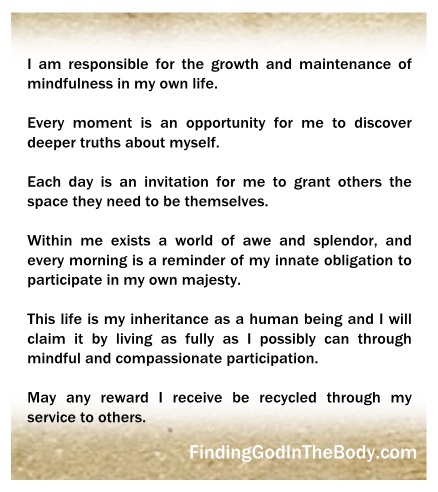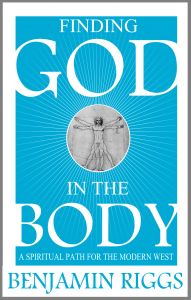Andrew Furst's Blog, page 34
January 29, 2017
What You’re Reading – January 2017
Here’s what people are reading here on andrewfurst.net in January 2017:
Winter Trees by William Carlos Williams – Compass Songs
Teddy Roosevelt on Trouble – Quotes
May The Fourth – Verse Us (Poems by Me)
The Day Lady Died by Frank O’Hara – Compass Songs
Hooked On the Afterlife? – Dialectic Two Step
Peppermint? – Say What?
Secular Buddhism – What’s Your Take? – Modern Koans\
Looking Skyward – Tiny Drops (Photography)
November Night by Adelaide Crapsey – Compass Songs
April – Sara Teasdale – Compass Songs

 At Patreon you can make small monthly micro-contributions that help support my work.
At Patreon you can make small monthly micro-contributions that help support my work.

If Patreon doesn't work for you, then drop me a one time contribution at PayPal.me
The post What You’re Reading – January 2017 written by Andrew Furst appeared on Andrew Furst.
January 27, 2017
Can You Recognize Evidence For God? – Dialectic Two Step
Question: If you don’t know who or what God is, how will you recognize evidence for God?
Response: Do you need to have knowledge of God in order to prove that God exists? alert, alert. you have successfully engaged the logic game, if you wish to play, your success requires that you follow the rules. If you break them, you need to accept correction or defeat.
A claim of belief by one person or even a group of people does not constitute evidence.
To make knowledge claim carries with it a heavier burden. There are a group of people who believe the earth is flat; another that believes the moon landings were faked; even more who believe that the color of your skin defines your value in society. These beliefs will never make the transition to knowledge, because they fail the evidence test.
If I were to claim that you are a murderer and that you should be executed, everyone, especially you, would pause and ask for concrete observable evidence. Standard evidence include a body, a weapon, a motive, and so on.Should the fact that I claim to know you’re a murderer be sufficient to execute you? What if the prosecutor was able to select a jury who all claimed knowledge that you were a murderer and did not feel the need to produce any evidence. Would this be sufficient for you?
When people engage logic to support their beliefs, they are often inclined to change the rules when their arguments don’t hold up. Beliefs are very personal and represent an integral part of how we view ourselves. Invalidating a belief has serious consequences that most of us are unprepared to accept.
When God and logic mix, the results are not good for believers. Sincere theists commonly appeal for exceptions to the rules of logic when they get sucked into arguments, because the accepted rules of logic and evidence do not allow for a valid argument for the existence of God.
If you agree to join in the logic game, you need to use the logic rule book. If you break the rules, you’ve made a wrong move and you must accept correction or defeat. If you decide you don’t like a rule and that it doesn’t apply to you, you’ve disqualified yourself. Game over.
The rules of logic and evidence do not permit an argument for the existence of God, For that reason, I recommend theist avoid getting pulled into playing the logic game.
Dialectic Two-Step is an ongoing series of my thoughts on questions that come my way.
Wisdom lies neither in fixity nor in change, but in the dialectic between the two. - Octavio
Get Each Month's Dialectic Two Step In Your Email Box
If you enjoyed this post, please like and share.
The post Can You Recognize Evidence For God? – Dialectic Two Step written by Andrew Furst appeared on Andrew Furst.
January 24, 2017
Burning the Old Year by Naomi Shihab Nye – Compass Songs
.
Letters swallow themselves in seconds.
Notes friends tied to the doorknob,
transparent scarlet paper,
sizzle like moth wings,
marry the air.
So much of any year is flammable,
lists of vegetables, partial poems.
Orange swirling flame of days,
so little is a stone.
Where there was something and suddenly isn’t,
an absence shouts, celebrates, leaves a space.
I begin again with the smallest numbers.
Quick dance, shuffle of losses and leaves,
only the things I didn’t do
crackle after the blazing dies.
Compass Songs is an ongoing series of works by poets that I enjoy. Poetry, as the Zen Masters have said, is like a finger pointing to the moon. It speaks the unspeakable.
Get Each Month's Compass Song In Your Email Box
If you enjoyed this post, please like and share.
The post Burning the Old Year by Naomi Shihab Nye – Compass Songs written by Andrew Furst appeared on Andrew Furst.
January 18, 2017
Body Speech and Mind – Tiny Drops
[image error]
Get Each Month's Tiny Drops In Your Email Box
All Tiny Drop photos Attribution-NonCommercial-ShareAlike 4.0 International (CC BY-NC-SA 4.0)
If you enjoyed this post, please like and share.
The post Body Speech and Mind – Tiny Drops written by Andrew Furst appeared on Andrew Furst.
January 16, 2017
Popular Cartoons by Andrew Furst
Here are the the most popular cartoons by Andrew Furst posted here. Say What? is an ongoing series of laconic exchanges on Buddhism in the format of a comic strip. Enjoy.
Popular Cartoons
1 Altered States? – Say What?
2 Peppermint? – Say What?
3 The Test – Say What?
4 No Doubt? – Say What?
5 What’s The Difference? – Say What?
6 Do Buddhists Bicker Better? – Say What?
7 Why Worry? – Say What?
8 Arthritis? – Say What?
9 Secularism? – Say What?
10 It’s The Community – Say What?
 At Patreon you can make small monthly micro-contributions that help support my work.
At Patreon you can make small monthly micro-contributions that help support my work.

If Patreon doesn't work for you, then drop me a one time contribution at PayPal.me
The post Popular Cartoons by Andrew Furst written by Andrew Furst appeared on Andrew Furst.
January 15, 2017
Project Finale- Post Card Art Project I
This is the project finale of the first Post Card Art Series, a collaborative art project done on postcards.
Group 01Nora Buckley, Judy Bousquin, Wendy Wakeman, Beth MartinezGroup 02Will Bond, Mandy Neff, Andi Turowsky, Joan SchwartzGroup 03Maya, Beth Martinez, Will Bond, Lisa GanciGroup 04Nora Buckley, Chasia Platt, Lola Platt, Soni Clarke LeeGroup 05David Michaud, Soni Clarke Lee, Joan Schwartz, Joss RuckusGroup 06Nora Buckley, John Intorcio, Soni Clarke Lee, Will BondGroup 07Margaret Gould, Nathan Furst, Suzanne Manzi, Rebecca GriffinGroup 08Kelly Murphy, Wendy Wakeman, Mary Gould, Jie ChenGroup 09Joss Ruckus, Bernie McGovern, Rich Salz, Whitney PerkinsGroup 10Rich Salz, Kelly Murphy, Maureen Crowley, Kelly MurphyGroup 11Soni Clarke Lee, Andi Turowsky, Nora Buckley, Lola PlattGroup 12Joan Schwartz, Helen Tanona, Garrett Brown, Lola PlattGroup 13Chasia Platt, Lynn Barry, Aileen Dashurova, John HoweGroup 14Bella Platt, William Zakkary Stinson, Bernie McGovern, Bala KotharieGroup 15Nathan Furst, William Zakkary Stinson, Joan Schwartz, Will BondGroup 16Victoria Platt, Kristen Mahoney, Mary Jo Stratton, Maureen CrowleyGroup 17William Zakkary Stinson, Millicent Wakeman, Ellie Mack, Lola PlattGroup 18Phoebe Johnson, Will Bond, Nathan Furst, Lily JohnsonGroup 19Phoebe Johnson, Will Bond, Nathan Furst, Lily JohnsonGroup 20Lynn Barry, Lindsay Colley, Bella Platt, Nora BuckleyGroup 21Jennifer Brown, Millicent Wakeman, Mark Foreman, Nathan FurstGroup 22William Zakkary Stinson, Jennifer Brown, Nora Buckley, David GouldGroup 23Lynn Barry, Aileen Dashurova, Lola Platt, Aileen DashurovaGroup 24Judy Bousquin, Lola Platt, Daniel Pereira, Mike ForemanGroup 25Nora Buckley, Victoria Platt, Bella Platt, Millicent WakemanGroup 26Lola Platt, Tara Keogh, Tara Keogh, Lola PlattGroup 27Tara Keogh, Parker, Nora Buckley, Joss RuckusGroup 28Tara Keogh, Parker, Nora Buckley, Joss Ruckus
The post Project Finale- Post Card Art Project I written by Andrew Furst appeared on Andrew Furst.
January 12, 2017
Shimmering – A One Minute Meditation
.
Change is the shimmering of form.
The sun on a morning pond
And the birth of a child.
Nothing is essential
And everything is just as real.
The engine of life
Grinds on in the shadow of entropy.
Chaos and order
Oscillate on the songbird’s syrinx
Dancing on light and air.
Pointing is futile and necessary.
The dizzying perturbations of impermanence
That arrive on the senses
Are the death wail of delusion.
Almost, I say,
Almost, deliberately overlooked.
Sun reflecting off Brackett Pond in Harold Parker State Park.
If you enjoyed this post, please like and share.
Minute Meditations is an ongoing series of short videos, poems, and commentary intended as a meditation. Offered as an opportunity to step back from your cyber routine and settle into a more natural rhythm, if only for a minute.
Get Each Month's Minute Meditations In Your Email Box
These videos are produced for those of us who spend an inordinately large amount of time in the cyber-world. They are not a substitute for unplugging from your devices and taking a stroll near trees, water, or a patch of unkempt grass. Getting out into the world - touching, smelling, hearing, and seeing nature is the best way to reconnect with our prime purpose.
What is our prime purpose? We are feeling and sensing machines. We are the universe looking back on itself. We are witness to the wonders and dangers of living in this corner of the cosmos. We are the seekers looking for connection a little further beyond yesterday's borders and boundaries.
But sitting and staring at the screen robs us of the sustenance that we rely upon for wonder and sanity. These videos are an opportunity to bring the sensations of nature to you, while you're in the cyber-world. Its an opportunity to relax your gaze, resettle your posture, and regain some depth in your breath. Listen and watch the video and allow your self to open up and recharge.
The post Shimmering – A One Minute Meditation written by Andrew Furst appeared on Andrew Furst.
January 9, 2017
John Steinbeck on Winter – Quotes

Quotes -The path to right view is an arduous walk through fields of manure.
Get Each Month's Quotes In Your Email Box
If you enjoyed this post, please like and share.
John Steinbeck on Winter

The post John Steinbeck on Winter – Quotes written by Andrew Furst appeared on Andrew Furst.
January 8, 2017
Slowing Down – Getting There is About Requirements
In my last installment on slowing down, I laid out these steps to managing a successful project.
Gather Requirements
Design
Develop
Test
Deploy
Maintenance
Don’t worry, I’m not going to spend a lot of time on this planning bit. Remember, I’m slowing down. But I find that staying on track requires that we stop, settle, take stock of where we are, then consciously move forward. Knowing where you want to be, helps quite a bit. Taking stock is about pulling together a set of requirements.
Requirements, Requirements, Requirements
The value of requirements are discovered in retrospect. When you look back at disastrous decisions or failed plans, you’ll often find that you moved too far from where you wanted to be. This can happen because of compromise, costs, or the lack of options to meet your goals. Whatever the reason, if you’re not happy with the outcome it’s usually because you didn’t meet your requirements.
Success comes from knowing what direction you want to move towards, discovering whether it’s achievable, and of course, getting started. You should periodically reflect on your progress by looking back at the “requirements”. Checking against your goals gives you the resolve to stick to your guns, as well as the courage to bail if it’s failing. Finishing a project is not the goal. Meeting your requirements is the goal.
Gathering requirements is not simple. There’s the soul searching. You need to be realistic, but at the same time reach for where you need to be.
Taking Stock
Soul searching – For me, this is where process began from here. I was spread too thin. I wasn’t living up to my own advice to be present. Present for my family, for my wife, to life at home.
Analyzing where I’m at – I did a basic inventory of how I spend my time. Life projects are about choosing how to spend your time. Finding out how you spend it now is helpful. I’ll go into detail on this shortly.
Writing good requirements – they should follow these pointers
One thing at a time – don’t combine things into one requirement – e.g. I will write a book and be healthier. those are 2 different things that will require different paths to success.
Don’t describe how, just what the outcome should be. Design comes later. Don’t decide that you’re going to loose weight by eating only carrots. It may turn out that you’ll do it some other way; like walking more, or increasing the protein in your diet.
They should be measurable – otherwise you can’t tell if you’ve succeeded. – e.g. I want to be happy. Does that mean I need to be happy all the time? more often? What do you mean by happy?
Where Am I Now?
The soul searching is done. So, the analysis of where I’m at now is next. Here’s a high level break out of how I spend my time (NOTE: these kinds of assessments are notoriously inaccurate, but you’ve got to start somewhere)
Activity
Hours per week
Work
60 hours
My Business
4 hours
Meditation Group
2 hours
Church
1 hour
Writing
21 hours
Errands
7 hours
Social Media
25 hours
Photography
3 hours
Putting the Requirements to Paper
So these are my requirements. Here’s what I want to set out to accomplish
Spend more time with my family
Continue to Meditate
Write more and better
Be healthier
Do Waterfall chasing and photography
Make room for all of this by reducing time spent doing other things
My next step is the design which we’ll talk about next time.
A short series on slowing down. I'll be sharing some of the things I've been doing to pare my life down so I can focus on the things that I think are impoirtant.
Slowing Down - Be slow in choosing a friend, slower in changing. - Benjamin Franklin
Subscribe to Receive Monthly Updates
If you enjoyed this post, please like and share.
The post Slowing Down – Getting There is About Requirements written by Andrew Furst appeared on Andrew Furst.
January 7, 2017
How to Keep New Year’s Resolutions – A Guest Post from Benjamin Riggs
It’s a New Year, and with every New Year comes new resolutions.
Unfortunately, many of our resolutions turn to disappointment when we are unable to overcome the inevitable struggles that transform a resolution into a new way of life. How do we turn the corner?
Perhaps the Buddhist teachings on Karma can help.
Karma is a central concept in Buddhism. You might even call it a law. Karma means action. More broadly speaking, karma is the principle of creation. It is the law of cause and effect that states for every action there is a result; that result is similar in nature to its cause; the effect produced will itself become a cause, which will produce effects that are similar in nature. In other words, our deeds shape the world we live in.
The world is our creation.
There are four components that contribute to the potency of a karmic seed: understanding, intention, the act itself, and the dedication.
For example, if someone is sensitive about their body image and we know this, intend to hurt them with a hurtful remark, and are happy that we hurt their feelings, then we plant a particularly negative karmic seed in our mind-stream. However, if we are unaware of their sensitivity, have no intention of hurting them, make a careless remark, and feel bad about hurting their feelings, the imprint will not be as potent.
How does this information help with our New Year’s resolutions?
The more potent the karmic seed, the more likely it will ripen in the future. Therefore, we are more likely to keep our New Year’s resolutions if they are built upon this karmic foundation. If our resolutions are rooted in understanding, intention, mindful action, and the merits are dedicated to the benefit of others, then our resolutions are more likely to become a reality.
If, on the other hand, our resolutions are nothing more than whimsical attempts to install healthy habits or desperate attempts to renounce self-defeating patterns, they are unlikely to make it past February.
Let’s say our New Year’s resolution is to start a daily meditation practice. If that resolution is supported by nothing more than a desire to meditate every day, it will soon fizzle out. Desire is fleeting. The day will come when we do not want to meditate. This is why the Buddhist tradition uses karmic principles to support the practice of meditation. First, you learn about the benefits of meditation and recall those benefits before you sit. Next, prayer is used to cultivate your intent before you begin meditating (see prayer below). Then, you begin the practice. When you are finished, you use prayer to dedicate the merits of your practice to the world in which you live. This four pronged approach strengthens your practice, ensuring its longevity.

This karmic approach to recreating your world can be applied to any New Year’s resolution.
If your New Year’s resolution is to exercise every day, then develop a clear understanding of the benefits of exercise, use prayer to transform that understanding into focused intention, carry that intent into each moment of your workout, and dedicate the merits of your exercise to the people you love.
Similarly, if your New Year’s resolution is to give up a bad habit, like eating copious amounts of sugar: understand how that behavior negatively impacts your quality of life, cultivate your intent to renounce that behavior, bring awareness (not judgment) into the choices you make, and dedicate the merit of those choices to the people in your life.
In addition to these karmic principles, there are a few other tips that might prove helpful. First, don’t set yourself up for failure. Set realistic goals. If you are new to meditation, don’t try to meditate for an hour on the first day. If you are breaking in your first pair of running shoes, then three miles probably isn’t a realistic goal. Set a challenging, but achievable goal, and allow your capacity to expand over time.
Second, rely on support and accountability. If you have a running partner or a meditation group that you feel supported by and accountable to, you are more likely to follow through with your resolution, as is your partner. Nothing promotes success as much as support and accountability.
Finally, perfection is the most unrealistic of all expectations. If you failed to go running on Monday or slipped up and had a piece of cheesecake Wednesday—or heaven forbid, both!—you can start over tomorrow. This is not an excuse to blow off your resolutions. It is just an obvious fact.
By your own admission, you were not perfect on December 31, and since New Year’s resolutions are not magical wishes, you will carry that imperfection over into the New Year. There will be successes along the way, but there will also be disappointments. Factor these inevitable disappointments into your initial expectations and be prepared to deal with them when they arise. If you do, you will view them as bumps in the road, rather than dead ends.
We have to keep going. Keeping our resolutions is all about perseverance.
Perseverance is king when it comes to creating a more meaningful way of life. I will close with this excerpt from my book, Finding God in the Body:
“When Gampopa, the founder of the Kagyu school of Tibetan Buddhism, asked his teacher for the highest, most esoteric teaching, his guru, Milarepa, bent over and showed him his calloused butt. Then Milarepa said, ‘This is my final teaching, persistence. You have to practice meditation every day.’ Deep and effective change comes from repetition, which is a byproduct of persistence, and persistence depends upon our ability to delay gratification and deal with disappointment.”
.

.

Benjamin Riggs – author of Finding God in the Body, director of the Refuge Meditation Group in Shreveport, LA, and contributor on Elephant Journal.
The post How to Keep New Year’s Resolutions – A Guest Post from Benjamin Riggs written by Andrew Furst appeared on Andrew Furst.



